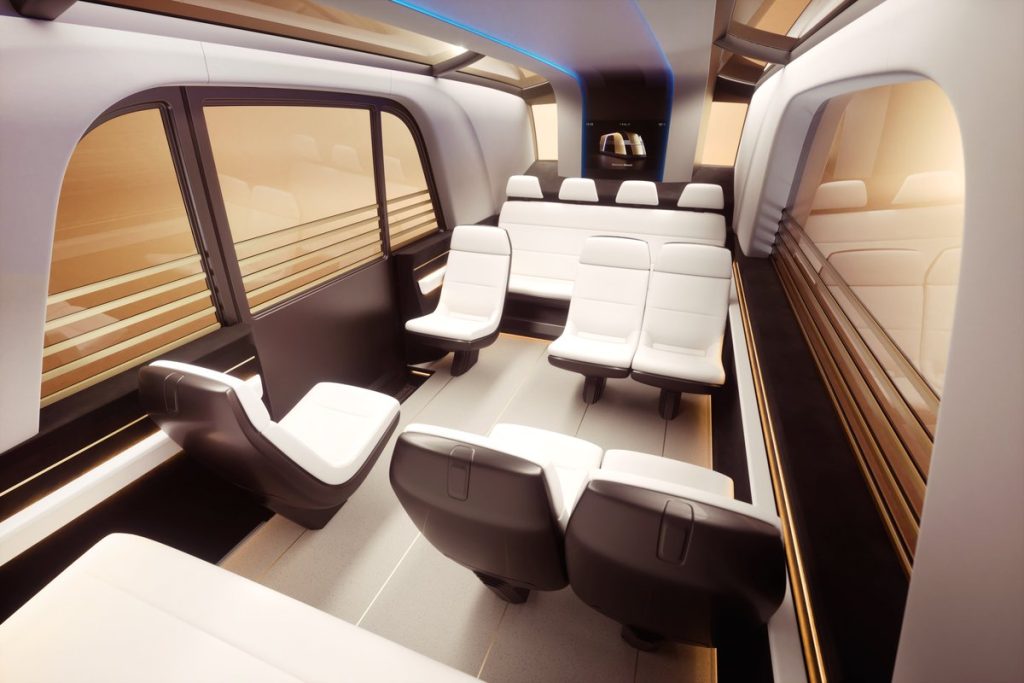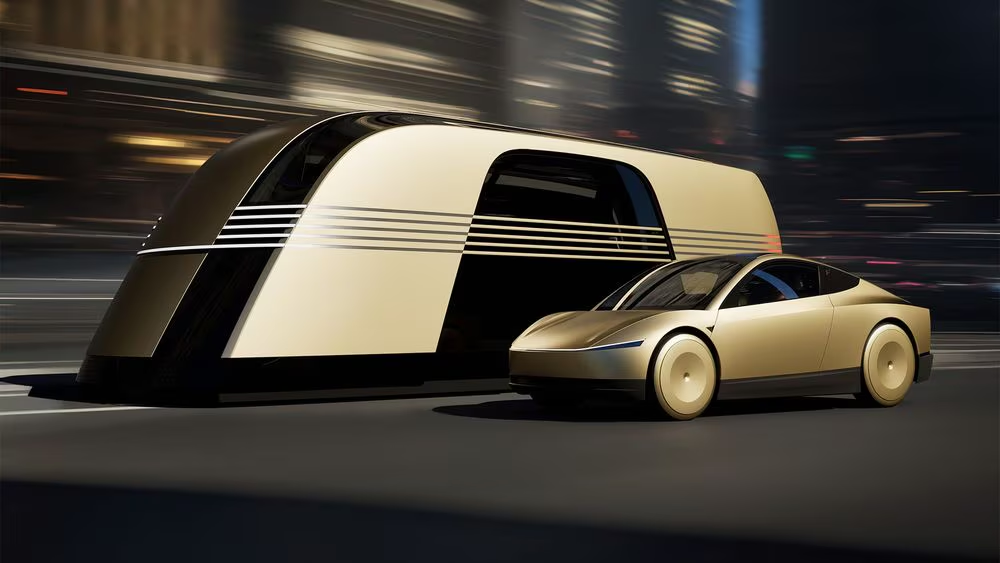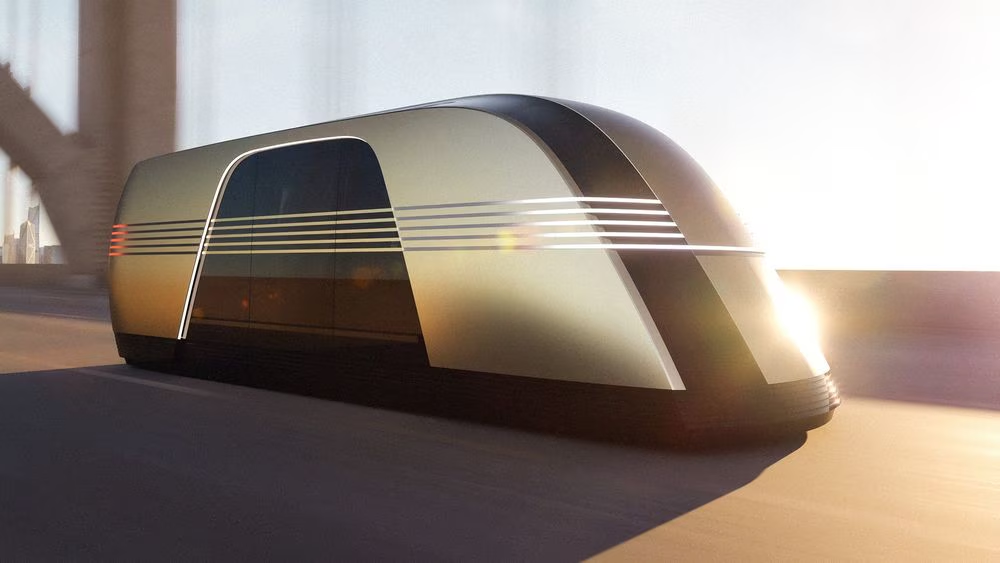On the evening of October 10, 2024, Elon Musk unveiled an intriguing prototype known as the Robovan during Tesla’s much-anticipated We, Robot event in Los Angeles. This ambitious new vehicle is positioned as an electric, autonomous transport solution aimed at navigating high-density urban environments. Designed to accommodate up to 20 passengers at a time, the Robovan also boasts capabilities for transporting goods, further emphasizing Tesla’s commitment to versatile, sustainable transportation solutions.

As Musk showcased the Robovan, he stated, “We’re going to make this, and it’s going to look like that,” hinting at the vehicle’s futuristic design as it glided onto the stage. However, despite the excitement surrounding the reveal, Musk was notably vague on essential details, including the anticipated price point, production methods, and timeline for availability. While the prototype certainly generates buzz, the lack of concrete information leaves potential buyers and industry observers with plenty of questions.
The design of the Robovan features a striking retro-futuristic aesthetic, reminiscent of a combination between a vehicle from a classic sci-fi series like The Jetsons and mid-century household appliances. Its exterior showcases sleek silver metallic sides complemented by bold black accents, with continuous strips of light adorning its sides. The doors, which slide open from the middle, add to the vehicle’s modern appeal. Inside, passengers will find a spacious interior with seating and standing room, enhanced by tinted windows to ensure privacy and comfort. Notably absent is a steering wheel, reinforcing the vehicle’s fully autonomous nature.
Musk articulated his vision for the future of urban transportation, stating, “One of the things we want to do – and we’ve done this with the Cybertruck – is we want to change the look of the roads. The future should look like the future.” This declaration emphasizes Tesla’s ambition to redefine transportation aesthetics, a mission that resonates with Musk’s previous comments about reshaping consumer expectations.
In comparison to other emerging autonomous transport solutions, the Robovan stands out due to its size. While it shares similarities with robotaxis developed by companies like Zoox and Cruise, Tesla’s offering is significantly larger. Internationally, similar vehicles like the WeRide Robobus have been introduced in China, but the Robovan’s scale and potential applications could provide Tesla with a competitive edge in this evolving market.

It’s important to note that the Robovan revealed at the event is still in prototype form. While Musk’s enthusiastic presentation painted a picture of a transformative vehicle, the reality of its production and deployment remains uncertain. Observers are left wondering how closely the final product will resemble the prototype and when it will actually hit the market.
Leading up to the We, Robot event, Tesla had kept the details surrounding its new vehicle designs tightly under wraps. The only hints had surfaced during the company’s 2023 Investor Day, where a smaller vehicle, later identified as the Cybercab, and a larger vehicle, presumably the Robovan, were teased. This aligns with Tesla’s ambitious goal of producing 20 million vehicles annually by 2030, a target that would necessitate a fifteenfold increase in production compared to 2022 levels.
During the event, Musk did not share any plans for expanding production facilities or reconfiguring existing plants to accommodate the manufacturing of either the Robovan or the Cybercab. Additionally, he provided scant information regarding the timeline for the Robovan’s availability, though he did speculate that production for the Cybercab could begin as early as 2026 or 2027.
The introduction of the Robovan aligns with a broader trend in the automotive industry toward electrification and autonomy. As cities grapple with increasing congestion and pollution, the demand for sustainable, efficient transportation solutions is more pressing than ever. Tesla’s foray into autonomous public transport could play a significant role in addressing these challenges, especially in densely populated areas where traditional vehicles struggle to operate effectively.
Furthermore, the Robovan’s ability to transport both people and goods makes it a versatile asset for urban planners and businesses alike. The prospect of an autonomous vehicle that can seamlessly switch between these roles could revolutionize how goods and services are delivered in metropolitan areas, enhancing efficiency while reducing environmental impact.
While the excitement surrounding the Robovan is palpable, potential challenges remain. The successful deployment of autonomous vehicles hinges not only on technological advancements but also on regulatory frameworks, public acceptance, and infrastructure readiness. As cities work to adapt to the rise of autonomous transport, Tesla will need to navigate these complexities to ensure the Robovan’s success.
In conclusion, the unveiling of the Robovan marks a significant milestone in Tesla’s journey toward transforming urban mobility. With its innovative design and autonomous capabilities, it holds the promise of reshaping how people and goods move in cities. However, as with any prototype, the true test will come as the company progresses from concept to reality. With a tentative timeline and many unanswered questions, the automotive world will be watching closely to see how Tesla navigates the path ahead for the Robovan.

